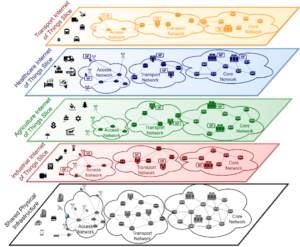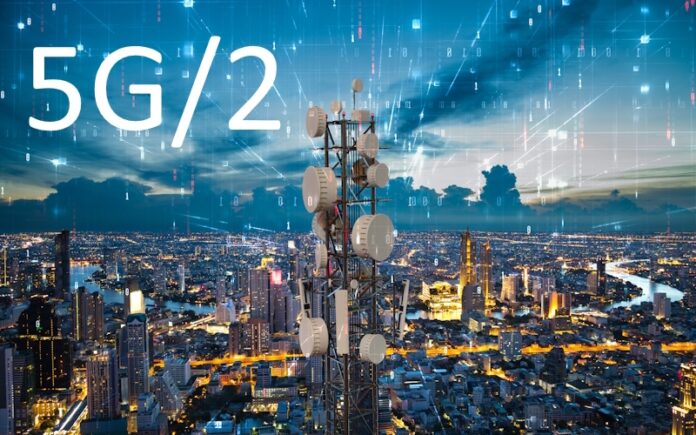EE World spoke with Spirent’s Stephen Douglas about the company’s annual 5G report. 5G development continues, with AI showing its influence.
Around 2014 or 2015, I first started hearing about 5G development, mainly in terms of 5G New Radio (5G NR). With the release of the first 5G standards in December 2018 and the start of 5G non-standalone (NSA) deployments that soon followed, the hype took off.
If we follow the believed ten-year development cycle of wireless generations, we’re now halfway through 5 G’s development and deployment life cycle. Sure, 6G has been in discussion for several years, almost since the first 5G deployments. That continues, but as 5G moves into the second half of its deployment cycle, we’re finally seeing the enhancements begin to appear. Those enhancements center around business use cases, which consumers don’t see. Meanwhile, the consumer pundits call 5G a flop. Search “5G flop” or 5G failure,” and you’ll see articles calling 5G a failure published within microseconds following the release of the specifications.
Whether or not 5G is a true flop, we still don’t know. That’s because much of 5 G’s capabilities were designed for business use cases, and businesses take far longer to upgrade equipment than consumers.
Signs of life are appearing, at least according to Spirent’s 2025 5G report, It’s halftime for 5G. Now in its sixth year, Spirent’s report revealed a few surprises, as Stephen Douglas told EE World. Fixed-wireless access, IoT, network slicing, private networks, and other technologies appear to be on the cusp of making 5G something other than a failure.
Fixed-wireless access comes of age
Before 5G’s first release (3GPP Release 15), all the talk centered around fixed-wireless access (FWA) as the first release of 5G. Why? Because fixed access is far easier to implement than enhanced Mobile Broadband (eMBB). But no, the telecom operators thought consumers would want mobile 5G first and be willing to pay for it. We all know how that turned out, especially when the limitations and deployment costs of mmWave became apparent.

A typical 5G FWA gateway uses 5G as a backhaul and Wi-Fi as a fronthaul. Both need testing to ensure an acceptable customer experience. (Image: Verizon)
Today, we see ads for 5G home internet, also known as fixed-wireless access (FWA). That’s one of the testing trends highlighted in the report. “FWA is going beyond its original deployment in rural areas and is now being tested and deployed not only in urban areas, but in enterprises and multi-unit dwellings,” said Douglas. Indeed, 5G repeaters just may bring mmWave out of the ashes and into buildings, though most 5G FWA deployments use lower frequencies.
Douglas noted that 5G FWA uses the same sub-6 GHz frequency bands mobile phones use, which brings up a congestion problem inside homes, particularly in the evenings when home internet gets heavy use. This led to another trend: testing customer-premises equipment (CPE) for customer experience. Home 5G routers convert cellular signals to Wi-Fi, and thus, Douglas sees more emphasis on CPE testing, not just network testing that ends at the CPE. Fortunately, we now have standards for testing in-home Wi-Fi. “Wi-Fi is not so good at home,” said Douglas. “Service providers often receive complaints about service related to in-home Wi-Fi, not the 5G network connection. One user can clog a home network. Wi-Fi 7 should take care of that.” Even so, Wi-Fi 7 will also need testing for customer signal strength, data rate, and, most of all, customer experience. Testing is moving beyond conformance to performance.
While FWA has proven popular with consumers, 5G development includes many other features, including the so-called reduced capability (RedCap). Introduced in 3GPP Release 17, RedCap specifies IoT devices that don’t need high bandwidth but must run on little power, sometimes for years, on a single battery. Douglas noted that by now, many RedCap-capable IoT devices are available, and testing is moving from the devices themselves to the network’s ability to connect with them.
Network slicing and private networks
We’ve heard about network slicing since the early 5G development stages. That’s ten years already. Related to private networks, network slicing allocates a dedicated network resource for a specific use case — for example, a factory, campus, hospital, or first-responder setting. Private networks have been getting more press lately as businesses look into possible benefits. In this second half of the 2020 decade, Spirent’s report highlights:
- Hybrid public/private network acceptance in the face of security, privacy, and performance concerns.
- Cost and integration challenges can be solved via enhanced 5G capabilities like RedCap and access traffic steering switching and splitting (ATSSS), especially in brownfield environments where Wi-Fi coexistence is required.
- Increase value and boost enterprise ROI potential by integrating Release 17 and 18 features like enhanced location performance and positioning accuracy, expanded support for Time-Sensitive Networking (TSN), and advanced mobility management for connected drones.
Private networks can also incorporate RedCap-capable devices. RedCap devices can go beyond and, in some cases, replace NB-IoT devices used on LTE networks.

Network slices let private networks and applications run in configurations defined for a particular use. Image: CEVA
Other areas that Douglas stressed were AI and security. The two are, of course, related in that AI could enhance security and make it easier for hackers to circumvent security measures. “Security testing is going beyond the specs, Douglas told EE World. He noted an uptick in what he called “chaos testing,” where cloud-native networks are stressed beyond the usual limits and specifications.
Finally, there’s AI. In 2024’s “It’s AI or die,” I reported on how people at OFC had the jitters about AI-generated data overrunning networks. Because of that, Douglas noted that he’s seeing network upgrades where core networks are upgrading from 100 Gbps links to 400 Gbps, jumping over 200 Gbps. He’s also seen edge networks jumping from 10 Gbps links to 100 Gbps, especially as edge computing comes into use.
Are we really at halftime? It depends on your perspective. While development cycles typically last about ten years, network lifetimes far exceed that. Indeed, networks going back to 2G are still in use. 4G development may have started in the mid-2000 decade, but those networks are still in use worldwide, with their sunset still many years away.
What trends and challenges in networks do you see in 2025 and beyond?

